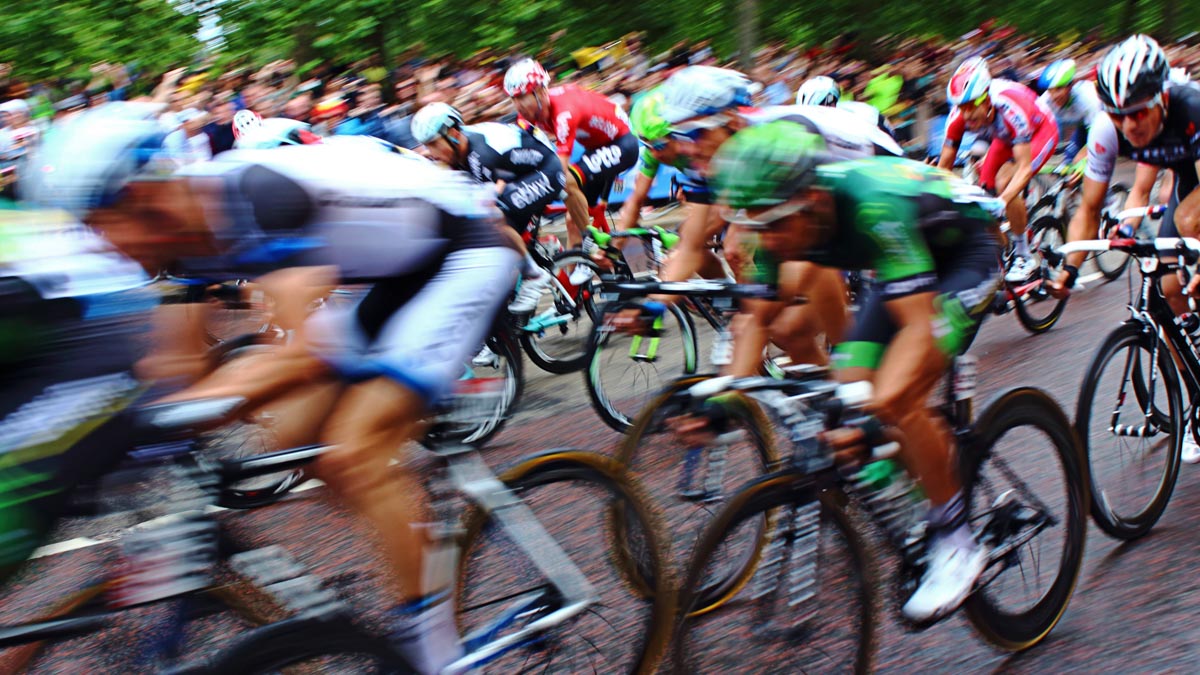Cyclists crash all the time. And unfortunately, if you want to ride your bike a lot, crashing is fairly inevitable. They occasionally happen during training but most commonly occur during races due to the intensity and close vicinity of other athletes. Despite the danger crashes can impose, it should never dissuade you from racing bikes.
Both athletes and coaches need to understand and accept the recovery process from a crash-induced injury. Crash recovery is equally physical and mental (imposing varying levels of trauma) and the process can be made easier by adhering to a gradual process and remaining patient.
Immediate Post-Crash Protocol
Immediately after crashing, assuming it’s serious enough to end your athlete’s participation in the race, there are some steps you both can take in order to increase the speed of recovery. First, calm down and assess the situation. If there is a spine or head injury, the athlete needs to remain as still as possible until medical professionals can arrive on scene. If their spine isn’t compromised, have your athlete breathe deeply so as to avoid panic while you determine if they can mobilize. If available, you and/or the race medical team can execute basic first aid so as to get the athlete in a manageable state to leave the race site.
Once some semblance of calm is restored, seek medical advice. Sometimes it’s hard to tell if a bone is broken or if there is any internal damage. Getting a medical screening in the hours immediately after a crash is always a good idea. It’s also important to get any wounds professionally cleaned and dressed to minimize the chances of infection. Take it from me, there are few things more evil than infected road rash.
Another sensible post-crash measure is to have a snack. As soon as you hit the floor your body will start pumping epinephrine which raises your blood sugar sharply – after this comes a blood sugar dip (this causes the unsettling post-crash shaky feeling.) Make sure you do this at a reasonable time — if your athlete is still in a heightened state of panic, give them some time to settle before you shove a granola bar in their hands.
Mid-Term Post-Crash Protocol
In the post-crash period (the first two days) don’t plan training sessions. Tissue damage can take 36-48 hours to materialize so resting should be a priority. Athletes should return to training gently and gradually. Progress should be dictated by how the athlete feels. Note that sleep will be difficult if significant skin loss has occurred, so athletes will need extra recovery time to care for their bodies.
Regular dressing changes and a cleaning schedule should be mapped out for the following week. If the athlete doesn’t change dressings regularly, wounds can become infected or dry making removal without damaging the repairing skin, difficult thus prolonging the complete recovery. If you’re working with a triathlete, highly discourage swimming until all wounds are healed.
Long-Term Post-Crash Protocol
As the athlete gradually resumes their training volume, the mental aspect of recovery will likely play a significant role. I’ve found that some crashes will affect confidence a lot more than others. Recovering confidence will depend on the cause of the crash: whether it was riding in a bunch, descending or sprinting. Gradually reintroduce your athlete to the crash-causing aspect of cycling, so as not to jar them into another accident.
For example, I once crashed while sprinting out of the saddle. This led to me being afraid to get out of the saddle at all once I was back on the road. The solution to this was to start by getting out the saddle on the turbo, then once I was confident doing that I got out the saddle on climbs, then through corners and finally full-speed sprinting. Regaining confidence can take time but rest assured the more you crash, the quicker your confidence recovers.
Crashing is not something that can be completely avoided. Seeking quick medical advice and gradually returning to training can shorten recovery time can increase confidence and make the entire experience as positive as it can be.


